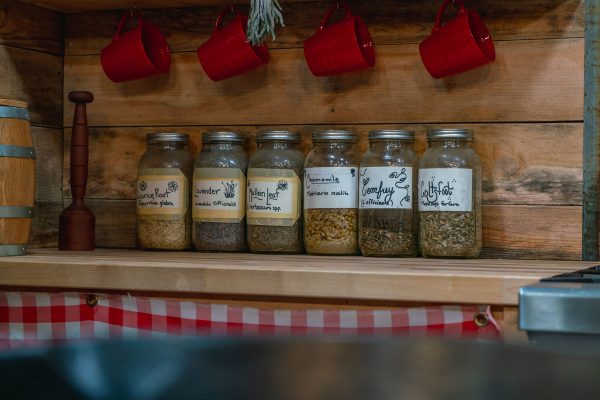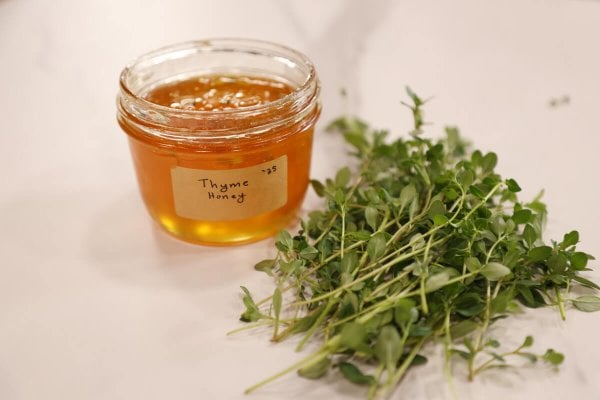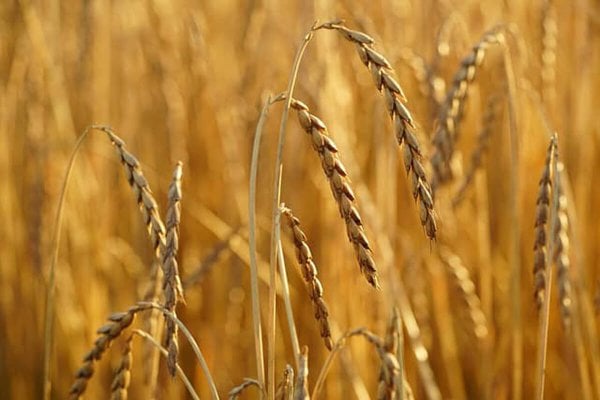We’ve discussed with you before about when homesteading feels urgent and planning and preparedness for the unknown, but once you’ve committed to the homesteading lifestyle, how do you ever get away from it all?

We know that more and more of you are homesteading and raising much of your own food, which is a beautiful thing. We hope you continue to do that no matter the political climate of our country.
The problem with homesteading, though, can be burnout. It can be exhausting, especially if you have a normal job outside of all the farm work at home.
It’s so important to take breaks from your homestead and take care of the people in your life and grow those relationships; children are only little for so long, people move on and fellowship opportunities end up lost forever.
For this reason, we encourage you to take a break (even if for a short while) to rest, recover, and keep your perspective on why homesteading is important to you. Read on for our tips to incorporate this much-needed practice into your homesteading lifestyle.
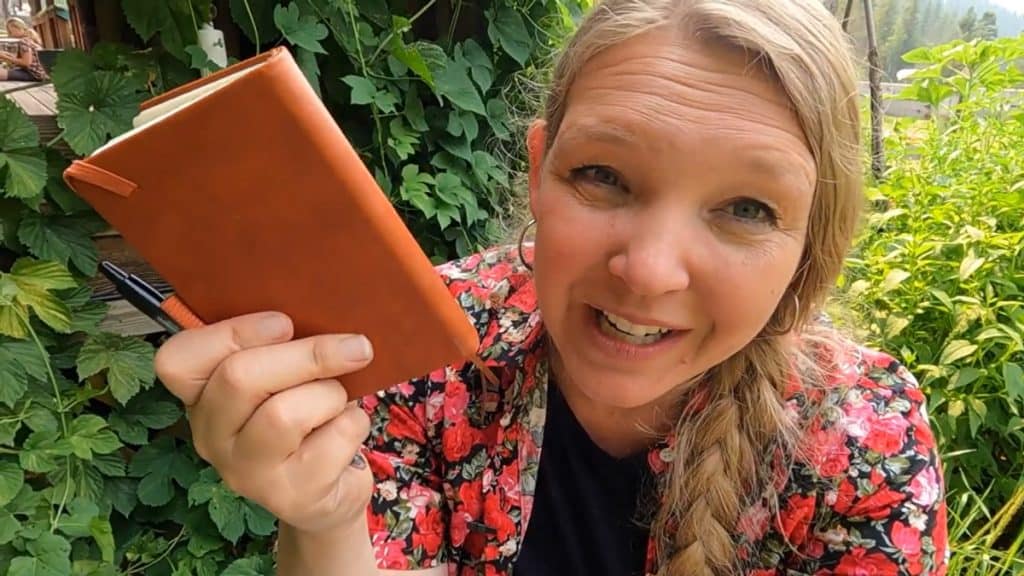
Put Your Vacation on the Calendar
The most important thing you need to do is to write your vacation on your calendar. It’s really easy to say that you’ll do something in June of next summer, but if you don’t write it down, your schedule will get full and it won’t happen.
We understand! Life is busy!
There are always projects we’re working on “just in case”. Things like putting up wood for the winter plus a little extra that goes into our “firewood savings account” (in case of a hard winter).
Even using our barn management system, these extras have to be tacked on to the already full schedule of preparing the barn for new piglets or getting ready for winter on the homestead.
These are just a couple of examples of how busy homesteading life can get and why we encourage you to get that vacation on the schedule a year in advance.
Homestead Hack: Everyone’s needs will differ, but we’ve found that it takes us seven days minimum to be recharged with a day back home to recover. We come home on a Saturday and always have Sunday to rest.
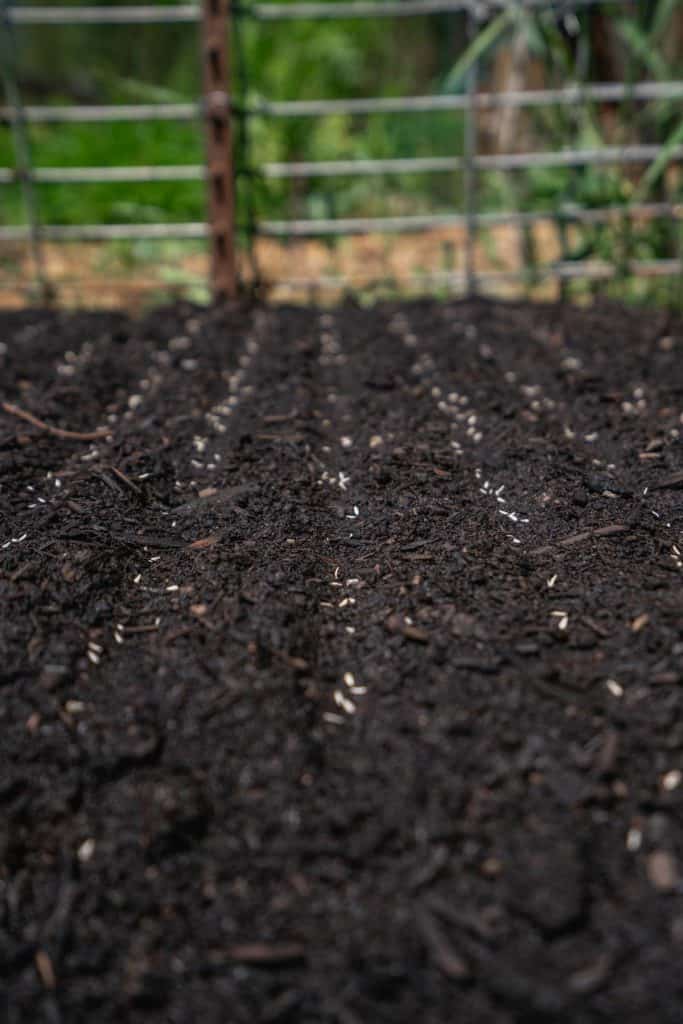
Travel at the Right Time
Plan your vacations at times when there is less work at your homestead. If your garden is going crazy and you have tons of canning to do, or you’ve got baby farm animals being born, and you’ve got hay to be put up, it’s not the time to vacation.
We find that we have a small amount of time to get away in early June through early July once the garden has been planted. However, wintertime on the homestead is much slower, so we take the majority of our vacations at this time.
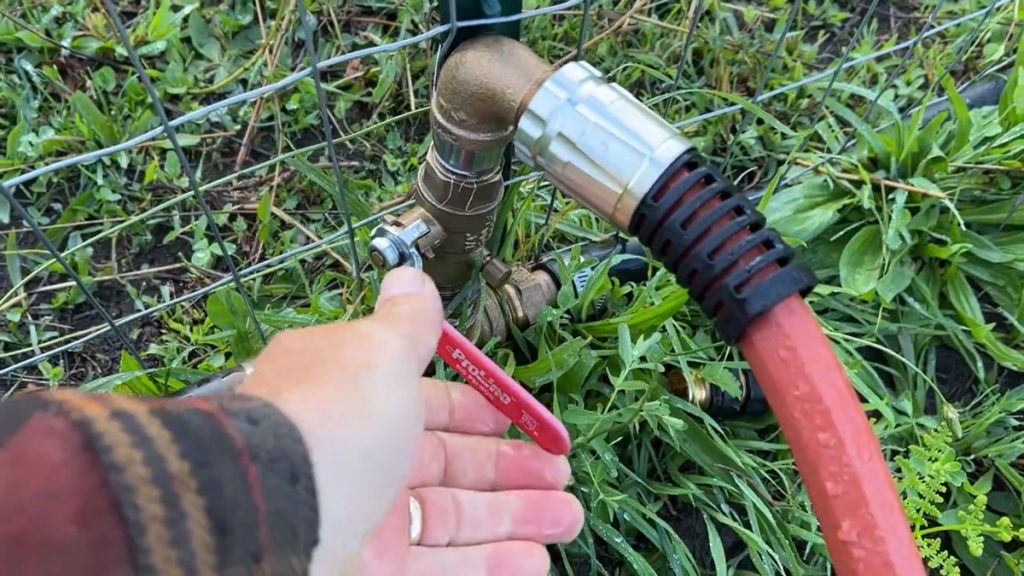
Have Good Systems in Place
At our homestead, we can get in the habit of doing things the hard way. You may be so used to dragging a hose all over the place to water the animals and water the garden, that you don’t even think about how putting in a new hose bib might make your life easier. (Much less the life of your farmsitter!)
Look at challenging projects and put infrastructure in place to fix them. We’ve shared before on emergency preparedness and how to prepare for power outages, and these should be part of your infrastructure plan.
As you grow in your homesteading skills, you will find better and more efficient systems, and it’s important to have these in place when you leave your homestead in the care of another person.
It’s easiest for us to vacation in the winter because the garden is put to sleep. We have a system where all the animals are in or around the barn, all the feed is in the barn, and there’s a frost-free water bib in the barn which makes everything centrally located and makes feeding easy.
The frost-free water bib also ensures that whoever feeds the animals for us doesn’t have to deal with frozen water problems. You can read more about our farm watering systems here.
Even if you don’t have a barn, you can put systems in place that will make it easier for you and for whoever is feeding animals for you. For instance, stack the hay right by where the cows are fed, so you aren’t hauling it daily.
Also, consider leaving phone numbers of anyone who might be of help if something does go wrong. This list should include a trusted neighbor and your vet. The fewer things that can go wrong, the better!

Find Good Help
It’s very important to hire someone you trust to watch your homestead while you’re on vacation. There are many options and we’ve used almost all of them.
Family and Friends
We’ve found that many of our friends and family who are interested in homesteading love the opportunity to try their hand at it by watching our homestead while we vacation.
Homeschool Kids
If you are part of a homeschool co-op, you can often find older kids who are used to farm life and farm chores, and they can be a great resource.
Neighbors
Trading vacation chores with your neighbors can be a great way to vacation. They already live near you, so they don’t have to travel to your homestead. This may be an opportunity not to have to pay for help if you trade chores straight across.
Social Media
Although we haven’t had to use this method, social media sites are specifically set up for people looking for homestead help. The applicants have experience in gardening, farm animals and all other aspects of homestead life.
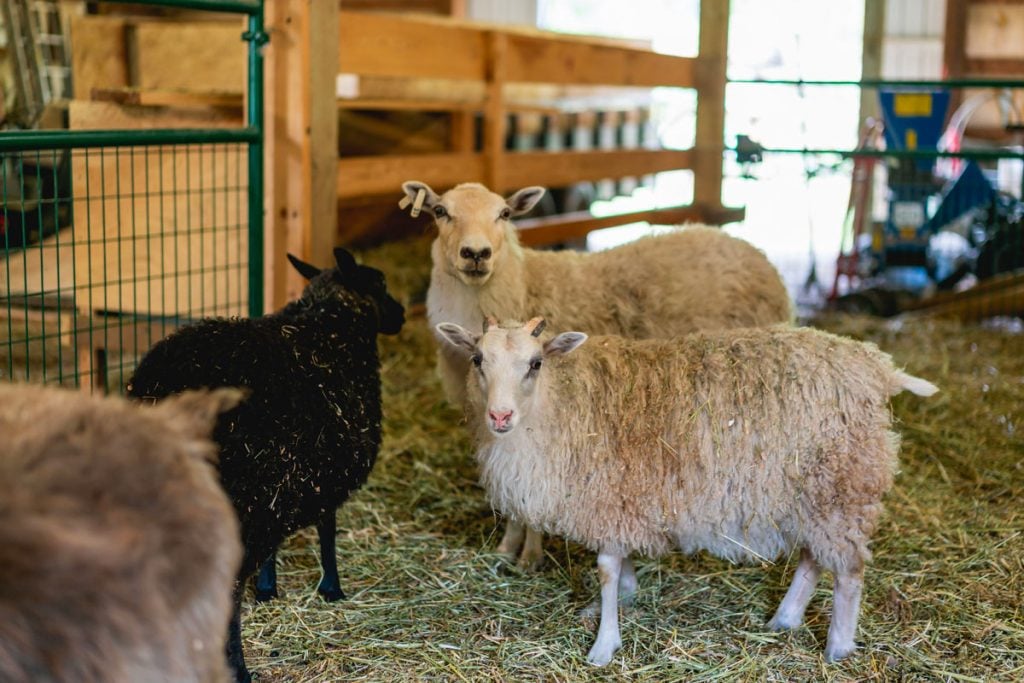
Be Prepared to Pay For Help
Good help often doesn’t come for free, so we recommend putting those costs right into your vacation budget. The cost for good help can range from $20 a day to $100 a day based on many factors.
How Far Out Do You Live
If your homestead helper is traveling quite a distance to care for your animals and garden twice a day, be prepared to compensate for that. We live quite a ways from town, so this is something we factor into what we are paying.
Are They Staying At Your House
When we use friends and family as our help, we often have them stay at our home. This cuts down tremendously on the travel time. We also encourage friends and family to eat from our abundance, which people also love.
How Many Chores Do You Have
Since we vacation in the winter, this cuts down tremendously on the workload for anyone helping us. When there is snow on the ground, the garden is finished up, so we only have the care of our animals left. If you put those good systems in place, this doesn’t have to take very long.
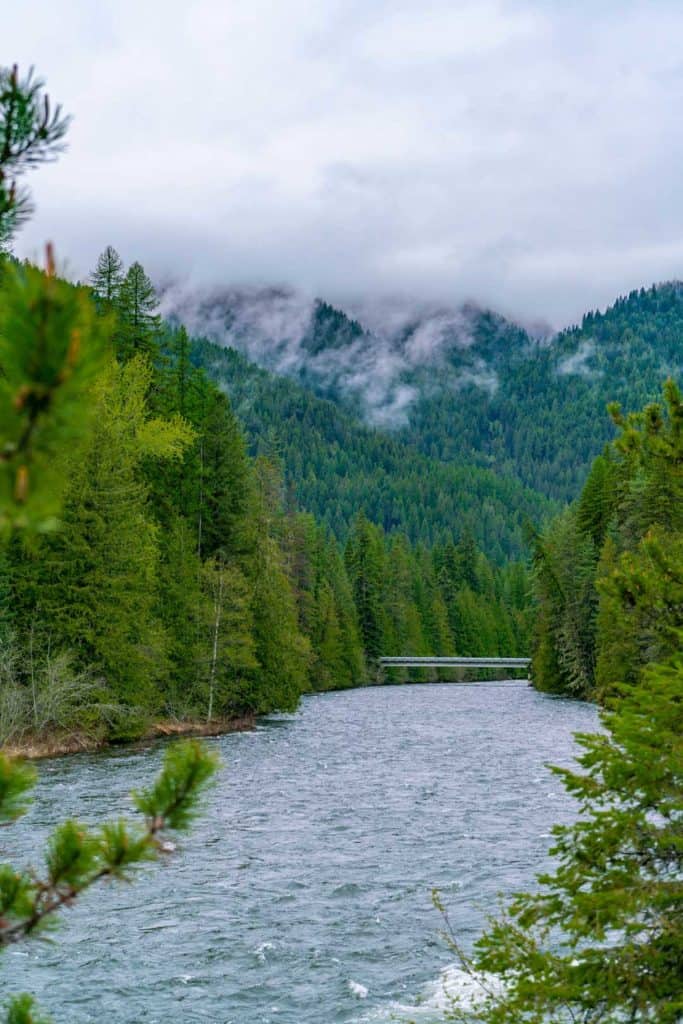
Take Little Vacations As Well
Besides your big vacation, schedule day trips and weekend trips away from your homestead. As we mentioned before, this is a lot of work, and you don’t want to drag your family down in the daily grind of it all.
Have fun, foster those relationships, and enjoy this life you’ve created for yourself. Some of the things we suggest are going to the zoo, going bowling or going to your local theme park.
If you don’t have the budget for those things, go hiking, swimming, or spend the day in a local park. Spending time with the people you love needs to be a high priority, and there are so many fun ways to do that.
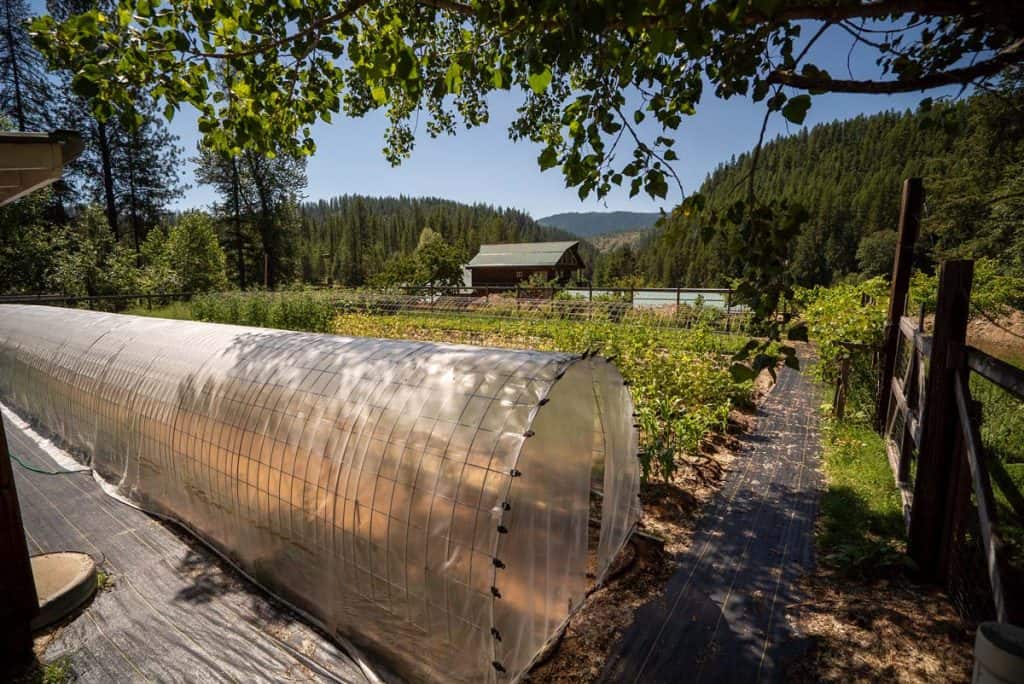
Other Homesteading Articles You May Enjoy
- How to Buy a Homestead Property-What to Know Before You Buy
- 10 Things I Wish I Had Known Before I Started Homesteading
- How to Prioritize Homestead Projects
- Homestead Activities for Winter
- Things to Consider Before Going Off Grid
- Best Homesteading Books for the Novice or the Pro
- When Homesteading Feels Urgent
- Wintertime on the Homestead
Josh: Hey, guys. This is Josh.
Carolyn: And Carolyn.
Josh: With Homesteading Family. And welcome to this week's episode of the Pantry Chat Food for Thought.
Carolyn: This week we're talking about how to get away from the homestead on a vacation.
Josh: I know you guys are thinking about a vacation, because a lot of you have asked. And you know what? We're having the same thoughts. It is mid stride to harvest season. It's been probably one of the busiest years ever. And a break is sounding really nice right now.
Carolyn: But it's not coming in the next week or two, I'll tell you that, because we've got the rest of harvest season to go.
Josh: But we do want that and you guys want that out there on the calendar somewhere. You need that little carrot out in front of you. And you need the break and the rest. So we're going to be talking about how to get a break from your homestead and actually take a vacation.
Carolyn: Sounds good.
Josh: But first, a little chit chat and a subscriber question.
Carolyn: All right. Good. What have you been up to? I'll ask you first.
Josh: Okay. All right. Switching things up. What's going on? It's just harvest season, everything from getting stuff out of the garden to getting ready to put the garden of bed. Not quite there yet, but starting to have those thoughts and make those plans. And firewood, it takes us 10 cords of firewood, so that is a major, major project around here. And it's been a busy year. I always hope to start earlier in the year. It just doesn't always happen.
Carolyn: Well, luckily, this year we're not starting at zero. We have a couple cords. Is that right?
Josh: Yep. And that's part of our system, is always trying to build up. And, of course, starting fresh on this property three years ago, we're trying to have a little surplus each year. And so I'm not really gathering less, but at least trying to put a little of that wood in the savings account for a day when it's a-
Carolyn: Hard, long winter, or whatever happens.
Josh: So firewood and continuing to get the barn ready, because we've got pigs coming. And just a lot going on. So getting ready for winter.
Carolyn: Those kunekunes are coming in next week, huh?
Josh: Yeah. That's right. Yep.
Carolyn: That's exciting.
Josh: It sure is. I think we will have them by the time we are here next.
Carolyn: Oh, okay. Good. That'll be fun.
Josh: Absolutely.
Carolyn: We'll have to share a photo of Lord and Lady Biggins, the pigs. What a name? Oh, my goodness.
Josh: So it is harvest time. You're feeling it. It's full swing. And feeling, I guess, the pressure for winter. I mean, it's always coming on this time of year. It feels a little more intense. We're watching things change a little early. A lot of the conversation around the community seems to be thinking and feeling for whatever reason, maybe wives' tales, maybe optimism, maybe telltale signs, I don't know, but a lot of us feel like winter might be coming early and might be long. So we're feeling that and prepping for it.
Carolyn: We sure could use it. We could use a good amount of snow on the ground and really build up our moisture levels again.
Josh: We look forward to it. And it's been a couple of very light winters for us here. And we're feeling it in the water tables and really need to see that snow pack build up and enough snow to really force you to slow down.
Carolyn: That would be good.
Josh: That's a good thing, too.
Carolyn: That would be good.
Josh: What about you? What are you doing?
Carolyn: Oh, plums.
Josh: Plums. Plums is the word of the day.
Carolyn: Plums, plums, plums. We have this little plum tree that was here when we moved in and the thing doesn't look like it could produce very much.
Josh: No. And it's kind of shaggy and little wimpy looking.
Carolyn: This thing puts out plums like nothing else.
Josh: What was it last year? 80 pounds?
Carolyn: Oh, the first year it was 200. Can you believe that amount of plums off of this shaggy little tree in the front yard? The thing just... I don't know what to say about it. But plum jam really is kind of the staple jam in our house, we found, because, honestly, there's not that many other great things to do with plums for preserving. We have an Italian prune tree. So we use those to do prunes. And they just make such superior prunes that we kind of stopped doing dried plums when you have the prunes around.
Josh: Hey, you going to freeze dry them. I mean, we're kind of trying everything with the freeze dryer this year. Give it a try.
Carolyn: I think we're going to try some in the freeze dryer. And there's always desserts, and syrups, and all sorts of things to make out of them. But jam is really, in our opinion, my opinion, where they shine. So we're doing a lot of jam. So that's happening right now. Oh, the carrots came in this week. We've pulled all the carrots. We got huge, beautiful carrots. Oh, my goodness, they are just amazing! So they are now packed in damp sawdust and are down in the makeshift root cellar, which is kind of the basement.
Josh: Yep. That's just the basement that we're trying to get a little cooled off. It's not quite cool enough yet.
Carolyn: I think we're going to make a little root cellar room down there. Maybe put some blankets, hang some heavy quilts or something to try to make a space.
Josh: If we can't get any framing and framing the room in, then we'll do that. And then, hey, a little cool hack we're doing, we've actually ducted in a four-inch duct from the outside with a little low-voltage fan that we're going to pull cold air in with. And that's going to help a lot. The bigger thing with the basement, especially this time of year, but even in the winter in our house, it works. And we get by. And we've done it and it's great, but it's not optimal. So by bringing some cool air in, that's going to help a lot. And that's a low-cost, pretty easy solution right now to help transition that space.
Carolyn: Absolutely. So carrots came in. We're still picking green beans. Our cauliflower this year is amazing. We're getting giant heads of cauliflower. They are huge heads of cauliflower. And we're still picking broccoli from the spring broccoli. So we're still getting full meals out of broccoli. So we're just kind of right in the heart of harvest season. We're picking bell peppers and using them as fast as we can. And our tomatoes are coming in now.
Josh: Tomatoes is our big struggle. That's our big challenge here. Tomatoes are hard in our environment and maybe we're just not that great at them on top of it. But the yield is actually looking pretty good. The plants have stressed. Looked stressed all year from the heat and whatever else [inaudible]-
Carolyn: It's been a challenging gardening year.
Josh: ... soil they're not liking. It has been, but the production is high. And even the tomatoes, which have been the biggest struggle as far as nurturing them along and them just not looking happy, there's actually a lot of fruit on the vine. It's actually going to be a very good yield if we can get them to ripen. And seeing the weather that's coming, well, we'll see. We've got them in the hoop house. So maybe they'll make the first frost. It would be great if we could ripen them on the vine, but we also can bring them in and box ripen them, which works great as well.
Carolyn: Absolutely. So we didn't talk at all about what we're doing here. We are sitting in front of the Airstream. That's kind of an odd spot.
Josh: That's kind of a vacation idea. We actually have not vacationed in this.
Carolyn: No we haven't.
Josh: We use it for guests. And we've used it in the past for a few date nights.
Carolyn: Yes. Sometimes you just need quiet space, especially in our house. Sometimes we need quiet space and this is a great little kind of place to go.
Josh: It is.
Carolyn: So we've enjoyed this.
Josh: And so it's a good escape having a space like this on the property.
Carolyn: So this is our vacation scene. All right.
Josh: Cool. Well, do you want to get to the subscriber question we got here?
Carolyn: You bet ya.
Josh: All right, from Anita Hillard. Hey, Anita, on the easiest ever tomato preservation. And Anita's wondering, "Can you put tomatoes up like this? And then in the winter, remove them in canned salsa or spaghetti sauce with them?" Cool. I like you're thinking.
Carolyn: So the easiest ever tomato preservation video is the fermenting tomatoes. That makes an amazing fermented tomato, but I've got to say they are salty. So you have to be prepared for that and whatever you're going to use them in, a little bit goes a long way as far as flavor. But the fresh tomato flavor, it is so incredibly bright, it is amazing. It's just a really nice way to do tomatoes. And it is so fast. It's so easy. So at the end of the season, you can just do a ton of them really fast. But the question being, can you take these fermented tomatoes and then turn around in can them? Usually, the official answer is no, that you don't want to do that unless you are dealing with a very tested recipe. The reason for that is that you've got fermenting where you're growing bacteria intentionally, and you've got canning where you want zero bacteria.
And so you're, essentially, taking something that is completely cultured by bacteria and wanting to can it. And they say in the canning safety world, that is just a bad place to start. You always want to start with your lowest bacterial load possible when you're canning, which is why you really don't want to do that. So there are certain instances where there are approved recipes for canning your sauerkraut. I'm not sure why you'd want to do that, honestly, but it's out there. I mean, make it shelf stable, I suppose. But to my knowledge, fermented tomatoes has never been tested or approved.
Josh: So being me, not the candy expert, question for you here, because I get the bacteria issue, but if you're canning to remove all bacteria, so you're working to a standard that is ensuring that whatever's in there bacteria-wise is gone. So whether you've got a little bacteria or a lot of bacteria to start, you're still working to a standard that says we're going to take care of all of that.
Carolyn: So kind of. And the reason for that is approved canning recipes, every single step is accounted for. And so they're starting with a low bacterial load in their recipes. And so the canning times and processing times are not intended to take something that's a high bacterial load and sterilize it. It's meant to start with a low bacterial load. So, great question and that's one that I struggled with for years. Why do I have to peel things if I'm just going to sterilize it anyways? And it's because it's not intended to start with something with a high load. So there you have it.
Josh: All righty. Well, it's better to be safe than sorry.
Carolyn: Absolutely. On the other side of this is that those tomatoes, I still have a jar of these. I'm kind of testing. I'm always experimenting. So I have a single quart jar of these tomatoes fermenting from last year. I'm kind of waiting to see if I try it at the one year mark, which is coming up here, when I'm ready to ferment the next round of tomatoes, what's it like?
Josh: Can you do a bigger batch?
Carolyn: Can I do a bigger batch?
Josh: Maybe you want to hold them over that long?
Carolyn: Yes.
Josh: And historically, people have, right?
Carolyn: I had an experiment last week I told you guys about. So I'll get to that in a second.
Josh: But historically, people have held ferment [inaudible] for a very long time. Flavor's going to strengthen, but-
Carolyn: So I found the one trick, if you want to do a long-term ferment, especially if you're looking to not hold it in a refrigerator, but you're wanting to hold it in your basement, where maybe it's cool, but not as cold as a refrigerator. And that would be to start with a sterilized vessel. That is the one thing that makes all the difference in the world. If you start with a sterilized vessel and then you get your ferment in there, you do not reopen it after you cap it down, obviously, it's not sealed, but that just means you're not letting in any more bacteria passed when it's actively fermenting, it will sit on your shelf for... Definitely, we've gone to 15 months now.
And just down in a cool space, as in 60s-type of cool space. And it will just sit there. And you can pull it out and it is amazing flavor. And because it's fermented, it's safe. It's not going to get any botulism or anything like that in there. And you can pull it out. Once you open it, you do have to then keep it in the refrigerator, because that just starts letting in bacteria. But anyways, you can do a lot. It's really amazing, what you can do. And playing with things is fun. I like experimenting.
Josh: Well, you end up with a lot of great content and a lot of great knowledge to share because of that, your research combined with experimenting. And I know you're done producing classes for the moment.
Carolyn: I am done for the moment.
Josh: But, long-term storage fermenting, I think that's a class one day.
Carolyn: It's just so easy. We probably should, because it's so fast, and so easy, and so much fun.
Josh: You know what I love about that concept is, it's low energy input. It's high quality. It's high quality. So you're using less energy and having a high quality product.
Carolyn: Well, it's getting healthier. That's the thing that just blows me away. It's actually getting healthier for you. That's pretty cool. So anyways. Okay, but I have to update you on the pickle experiment that I did last week. Okay. So I dehydrated pickles. So first I fermented pickles, dill pickles. Then I dehydrated them. And I freeze dried them. Freeze dried them? Froze dried? Freeze dried them.
Josh: I think freeze dried works, yeah.
Carolyn: I'm making up new words here. And they were both incredible. They were both very good. The freeze-dried pickles, the flavor was so concentrated you could not eat too many of them, even if you're a pickle lover, I think, because it just really exploded in your mouth. But they were crunchy, like great crunchy. They were a lot of fun. The dehydrated ones, the flavor wasn't as strong. It was just more like eating a pickle. And they didn't stay as crunchy very long. As soon as they came out of the dehydrator, they went soft again. So I liked them both. I'm curious about cooking with them. Have you ever cooked with a pickle?
Josh: So you know what somebody was telling me about? I had the freeze-dried ones. They were great. I didn't get one of the dehydrated ones. But a friend of mine was telling me about putting freeze-dried tomato on their burger and actually just putting it right on the burger and let the juices of the burger soak into the tomato. And he said it didn't quite rehydrate enough, but the flavor was out of this world. And so I was thinking about the pickles. For a pickle lover that likes pickles on their burger, put a couple of those on there and let the juices rehydrate it, because there's sliced real thin. So they're probably going to actually rehydrate a little easier than that tomato. And wow, that could be just a flavor bomb.
Carolyn: There you go. I like it. I think that's fun. I'm going to have to try the tomatoes. Well, and that's a good way to preserve something that is fermented. If you don't want it to keep fermenting, because it's going to get too sour for you, then you could freeze dry it and it still does retain some of its bacteria, not the full amount. But anyways, we're having fun chatting. We should probably move on to the topic.
Josh: Well, it's a good topic. I like vacations. I want a vacation.
Carolyn: A vacation right now sounds very, very nice.
Josh: Absolutely. And I know you guys want a vacation. A lot of you are doing more, I think, than you've ever done this year, and understandably so with the last couple years that we've had. And those are great motivations. And I hope that all of us will keep doing this regardless of what the political scene is, or the health scene, or whatever. This is just good for community. It's good for people that all of us are growing more food. But it is work and it is a different lifestyle.
Carolyn: And a lot of times it's work on top of your normal work. You already have a job. You do what you're doing and then you have this on top of it.
Josh: And it is tough. It's hard. It's not easy. And gosh, there's just so many things we can talk about, about making it easier and more efficient. And we're going to cover a few of those, because they help towards getting you towards that vacation. And so you know what? My first thing that I think of is you got to get it on the calendar. You've got to plan your year out ahead, before your burnout, and have a spot that you know you're getting to and plan that in. Even if you don't know what you're going to do, where you're going to go, how you're going to pay for it, put a spot in there. And get it on the calendar. That, we have learned and are learning, is just getting more and more important. With all the busyness in life, and the kids getting older, we've got to get stuff scheduled in. So plan that vacation in. Start thinking now about next year's vacation.
Carolyn: I want to go backwards just a little bit, because a really, very, very real problem with homesteading is burnout. This happens to people all the time, is that kind of just get so excited about what you're doing or you feel this intensity that you really need to produce more food and get your systems up and running, and so you work and work, and work, and work. And before long, you're starting to go, "What was wrong with going to the grocery store for my food? I'm not getting to catch a breath. I'm just working all the time." And it's so important to balance things out. Balance your life. It's better to be slow and steady and take the breaks, take care of yourself, your relationships, your family, all those things and make slow progress than it is to do a bunch all at once and then burn out and say, "I'm not doing that again."
Josh: Well, but you're still going to have those feelings. And for one, know that it's normal. We're all doing things that generally is not historically normal to us, to our heritage. I mean, some of you probably have some agricultural background. But the modern homesteading lifestyle, it's pioneering, in its own way. And it is challenging. And we have moments where we're like, "What in the world are we doing? Why are we doing this? What did we get into? And I don't want to do this anymore." And there's other drivers that push us through that, but know that you're going to experience that. And if you are experiencing it, it's okay. And it's a part of the journey. It's a part of learning. And so then we've got to be prepared for that and move through it. But just know that it happens. It's okay. Don't give up. We keep learning and we keep planning better.
And so one of the things with planning vacations is, on the homestead we're living a much more seasonal life. And so we've got to look at seasonality and where does it fit in? So if you're going to get it on the calendar, you got to think about where does it fit in? Because you've got not only your day job, or whatever you're doing, kids' schedules, family events, work events, and then you've got the homestead on top of that. And you've got to try to find a spot to plug that in. For us, that's often winter time, is where things really slow down for us. But that has its challenges, because it's winter time. And where do we go? What do we do? But that seasonality is really, really important. Where does that fit into your season? Look for the slow points.
Carolyn: And there are some that happen in the middle of summer. We've found that June for us, right after the main planting, it gets quiet for a while.
Josh: You get about a month, if we don't stack up stuff.
Carolyn: If we don't overfill our own schedule with other things. But as far as the homestead goes, that can be a great moment for us to take week-long trips, or get away for a weekend, or anything like that. So there are spots in between the busy seasons that are great moments. And it's just looking for those spots on your calendar.
Josh: Absolutely. And finding the slow spot where it fits in well. And then, of course, you got to line it up with the rest of life. And so get that on the calendar. That's step one. Find out where it fits. And don't even worry about what you're going to do yet. Just find that place. How much time can you take? We have found over the years, seven days is minimum.
Carolyn: To actually get away on vacation and get to where you feel recharged and ready to come back. You get to that point where you're like, "I just want to get back and can something." That takes seven days to get to.
Josh: And side note, leave yourself a day coming home. And we have had to get rigid about this in planning trips, vacation, or even just different trips. So for us, it's Sunday. We're going to get home on a Saturday, if we got to get home at midnight or two in the morning on a Saturday. And that way, Sunday we have a break. And we have rest. And so wherever that lines up for you, make sure you factor in a day of being home before you got to jump back into the grind. Otherwise, it's like that vacation just gets wiped out. It's like, you're on the push to get home. You get home late Sunday night. And you're back at it Monday. And so plan that in as well, that bridge day.
Carolyn: So let's talk about some of the actual practical, how do we do this? We've got animals. We've got gardens. How do we walk away? Because that is a very real challenge.
Josh: It is. Now, you've got the garden out there that you're going to trust to somebody else that you have labored over and gotten all planted and going. The heat's just kicking on. And what? You're going to turn this over to somebody else that hasn't put the work in and doesn't know the system? Or what about-
Carolyn: And how do you find that somebody else?
Josh: Right. Well, let's get to that in a moment. But just dealing with those aspects of the work you've put in. If you are going midway, or wherever you decide it works for you, again, the slow points is really helpful. But you've got your animals out there. Maybe you've got meat chickens that need daily, sometimes twice daily care. There's a lot going on. And so systems is really, really important. And it's important for a lot of reasons. But the better systems that you have in, that you can hand over and explain to somebody, the better job they're going to be able to do for you.
Carolyn: It's really easy when it's just us working on our homestead and we're setting something up and we're just like, "Oh, well, I'll just drag that hose every time I have to water from there to there." We have it justified in our mind and we kind of get used to doing things the hard way. I guess, we get into the-
Josh: And a lot of times it starts from working with what you've got and doing what you've got to do.
Carolyn: Right. Exactly. But when you want to hand that over to somebody else, if you want somebody else to come onto your homestead and to actually care for things, it really needs to be set up so that it almost runs itself, the closest as possible. Or at least, it's really easy to do. And so really this is what we want for ourselves, too. This is what you want for yourself. You want to make your job easier every single year, not harder. It should be getting simpler and less labor intensive every year, not more labor intensive. So we need to kind of step back and take stock of the systems that we have. Where are the challenging points? Where are the things that end up causing extra time and labor that just by doing a project to put the right infrastructure in would fix that issue? So I think that's really important.
Josh: It really is. And so you start to combine timing with those systems. And I'll give an example for us, where our core vacation time is in the winter, because snow is on the ground. So the garden's a non-issue. The fruit trees are a non-issue. They're put to bed. They're done. And we've got animals to feed. And we've created a system in the barn, where all the animals are in the barn, or right adjacent to it, right close to it. The feed is all right there. There is water in the barn, water hose in the barn, and a freeze-proof water bib. And there's actually water troughs where they're only going to have to get filled up a couple times while we're gone. And so the main work is feeding those animals. That is a pretty simple task. We've set it up. So nobody's having to trudge through the snow, including ourselves.
We're blessed at this point. We've got a barn now. We've had other times where we haven't. And we've had to still work through this and try to get the hay as close as possible, and protect it, and create other systems working with what we have. So I'm using our example right now. But you've got to take what you've got. And how can you systematize this and make it as easy as possible for the person that's going to be there?
Carolyn: The fewer things that can go wrong, the better. And the easier it can be, the better. Always. Okay. So you have your systems kind of dialed in a little bit.
Josh: You're picking a good time.
Carolyn: You're picking a good time. Now what do you do?
Josh: Well, now, you need that person. You need to find somebody. We've got a squirrel throwing things at us, just so you know. So if the camera gets hit and falls over, it's this guy up here. We've had a couple large pine cones come down. And we're under the awning. The camera's not. The squirrel's kind of funny sometimes. Anyways, you got to find the person. And we all want to go to family or friends first, if we can.
Carolyn: And neighbors. Don't forget neighbors if you live in a rural area with people who do this sort of thing. Sometimes people are super happy to trade vacations. You go on vacation, I'll take care of your place. And then I want to go on vacation, you can take care of my place. That can work out really well.
Josh: It really can. You may have a friend that's interested in your lifestyle, interested in what you're doing and just wants to get immersed in there. And that's great. The next steps, if you don't have somebody right in that closer circle is to go out, maybe to social media, maybe you're in some groups in your area of like-minded people. There may be somebody there that has some knowledge that you can find that will take care of your place. And then while we haven't done this yet, there are actually, and I don't have the websites, but if you just look this up online, there are a few sites where people house sit and farm sit, as well.
And so start with your local area obviously, and then work up if you got to go broader and throw a net out into the net. There are resources out there. There are people that do this, which kind of leads to the next thing, which means you're probably going to have to pay for it. And so you've got to budget that into your vacation budget.
Carolyn: Let me go backwards to one other idea that we have had great success with, is that if you're in a community with homeschooled children, that has a large homeschooling contingent in it, the older teenager kids are often a great person to come house sit. If you've got responsible homeschool, especially if they're coming off of the farm, then they're probably very adept at handling animals and taking care of problems. And we have had great success with that in the past.
Josh: Yep. So another thing too, another incentive, and this is kind of moving towards that conversation of compensating people is sharing some of the harvest with them, sharing some of what's in the freezer. A lot of times people love that. They're happy to have some of that home grown, really tasty, really healthy food. And we've done that where we've paid somebody. Our place is bigger. It is a bit to watch over. It's a little further out. They've got to drive back and forth more to get in and out of here. And so we've paid them. And we've said, "Hey, eat what you want out of the freezer while you're here or out of the pantry and enjoy yourself." And we've had people be very happy with that.
But if you got a budget, you need to figure that in. I mean, it's great if you've got a resource and you can trade, like Carolyn's saying, or you've got somebody that wants to learn or just be involved, that's great. But I wouldn't count on that. When you're planning and budgeting, budget it in. If you end up getting somebody that you don't have to pay as much as you thought or they'll do it for free, great. You've got a little extra spending money on vacation or put it toward next year. But plan for that, to make that part of your plan so that you can get the right person in there to look after your place.
Carolyn: You know much it costs for a good farm sitter is really all over the map. It is really hard to give you guys a range, because it's going to depend on one, are they staying in your home? Or are they driving back and forth? How many times a day do they need to come to your home to take care of animals? And how many animals and projects do they need to take care of? So it could be as little as 20 bucks a day if you've got a neighbor who just has to come over once a day and make sure the water gets turned on and off. It could be closer to a hundred dollars a day plus if you've got somebody who's got to drive multiple times and take care of a decent farm, decent sized farm.
Josh: And how far out are you? That's a big impact on the person and whatever their daily routine is. For us, somebody's got to stay here. And it's better anyways, because we've got a lot of bigger systems and want somebody watching over the place. But we're also far enough out where it's not practical for them to come and go. So you got to consider those things. I was thinking of something else. Do you have something?
Carolyn: I do. I know one and it's a little off this main topic line that we're working on, but it's, don't wait until you can take this big vacation to get away from the farm. Take little ones. Go out on hiking trips with your family. Go out to the, I don't know, the bowling alley, the park. Go do fun things at the zoo, whatever you have around you. We don't have a lot of cultural things around us like zoos right now for a day trip. Go to the theme park. That's what we just did. Make sure that you're not dragging the whole family down with homesteading, especially if you're kind of the one that's driving the homesteading idea.
Make sure that you're still getting out and participating in things that everybody else would enjoy participating in. Get away regularly. Get off the farm and go do fun things. You feed the animals in the morning. You have to be back by time to take care of them in the evening. But just make sure that you're getting out and participating in other things in your community.
Josh: Well, and schedule those in, too. We're learning, especially with older kids and the dynamics, people are going in more different directions. We're all busy. Every year we realize we've got to schedule more, not just say we're going to do more and then try to do it. So that core vacation's got to get in there, if we're going to do that. And then if we're going to do these other events, we need to look ahead. We need to think about, okay, where are good moments and time to do these things? Let's put it on the calendar now so that nothing else gets booked in that spot, instead of, "We'll probably do that in June." And we've been great at this. Okay, we're going to do a few more things this summer. We'll do this in June. It doesn't get on the calendar and then other stuff gets on the calendar. And all of a sudden, it's like, "Whoa, where'd the time go?"
So that's great. Also, book those things in. Carve out the spaces ahead of time. And you just don't touch that space. It's sacred, essentially. You're going to leave it alone and you're going to do something. Even if you've got no budget, you're going to go for a hike. You're going to do something at home if you need to, but you're going to take the day off. You're going to spend some time together. And that's hard. It actually gets hard to get it done.
Carolyn: It is. It's going to feel very misplaced in your schedule when you get there. If you're busy and you're like, "Oh, I've got this that I have to harvest. And I've got to do this. I've got to do that," you're going to be like, "What am I doing taking a day off and going on a picnic?" That's going to feel really challenging to do, but we've got to remember, we are doing these things for people. The reason we're homesteading is not because we just want to play on a farm. It's because we're doing them for people, for health, for taking care of people well, for the relationships that it builds as we're working together. We need to remember to prioritize those relationships. And sometimes the way to do that is to walk away from work and go play together and take some time off together. So that just, even though it's going to feel like it's not high priority because you're not working, it is high priority. And it is important to do.,
Josh: Absolutely. So make sure you sit down after you've watched this. Start looking at your calendar with your spouse and your kids, or whoever's in the household with you. And you're probably like us in the middle of harvest season. If you don't have something scheduled, at least try to get a reward in at the end of harvest season for yourself this year. And then as you're thinking about the future, starting to think about next year, start thinking now, where does this fit? What can we do? And start planning it out. And you can make it happen. You can do it. And you'll be so, so glad you did.
Carolyn: Absolutely.
Josh: Been great hanging with you guys. And we will see soon.
Carolyn: Sounds good. All right.
Josh: Goodbye!
Carolyn: Goodbye!
Josh: Thanks for listening to this episode of the Pantry Chat Food for Thought. If you've enjoyed this episode, please subscribe, rate and review.
Carolyn: To view the show notes and any other resources mentioned on this episode, you can learn more at homesteadingfamily.com/podcast.
Josh: We'll see you soon.
Carolyn: Goodbye!
Sign up to receive email updates
Enter your name and email address below and I'll send you periodic updates about the podcast.











